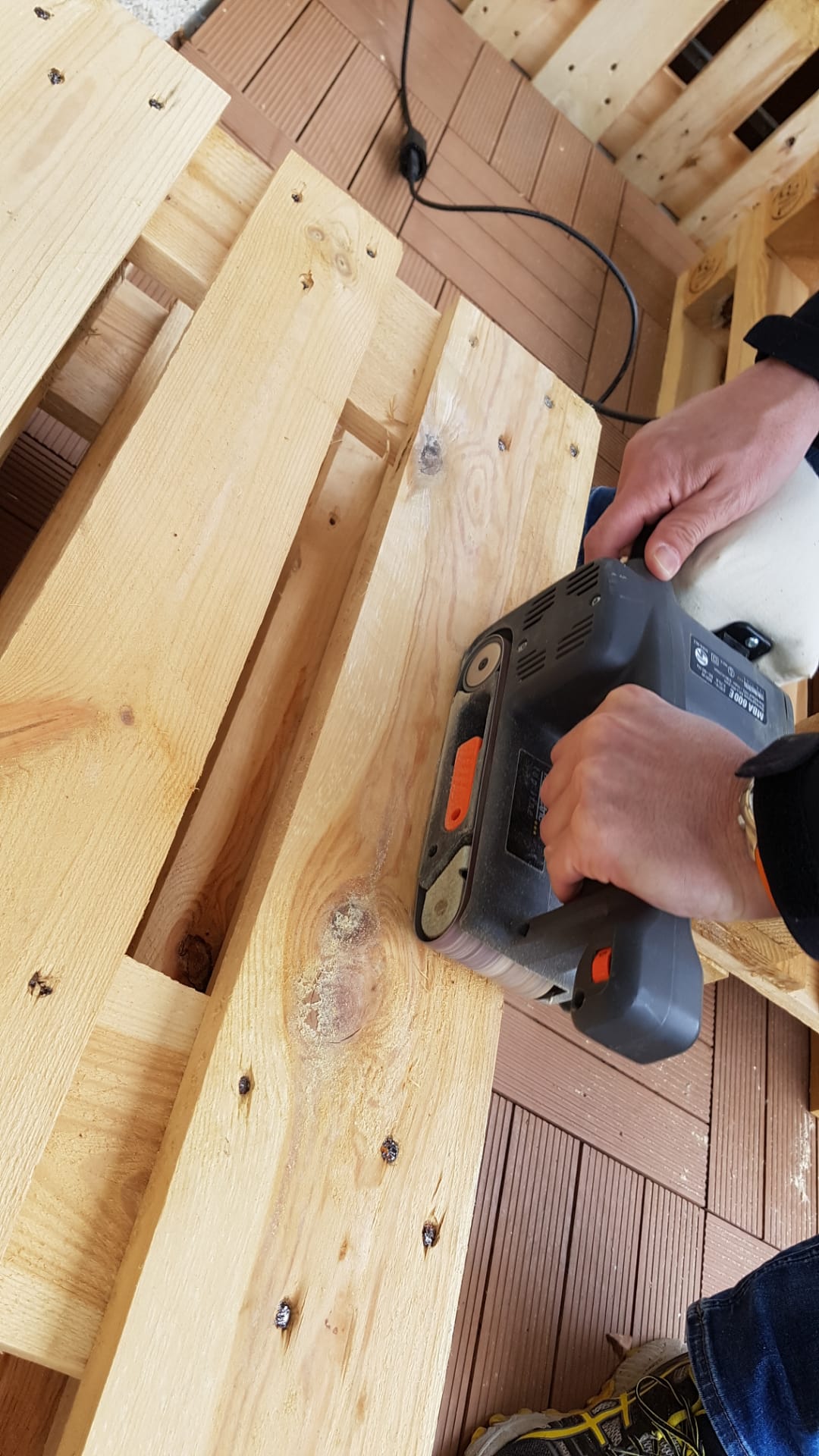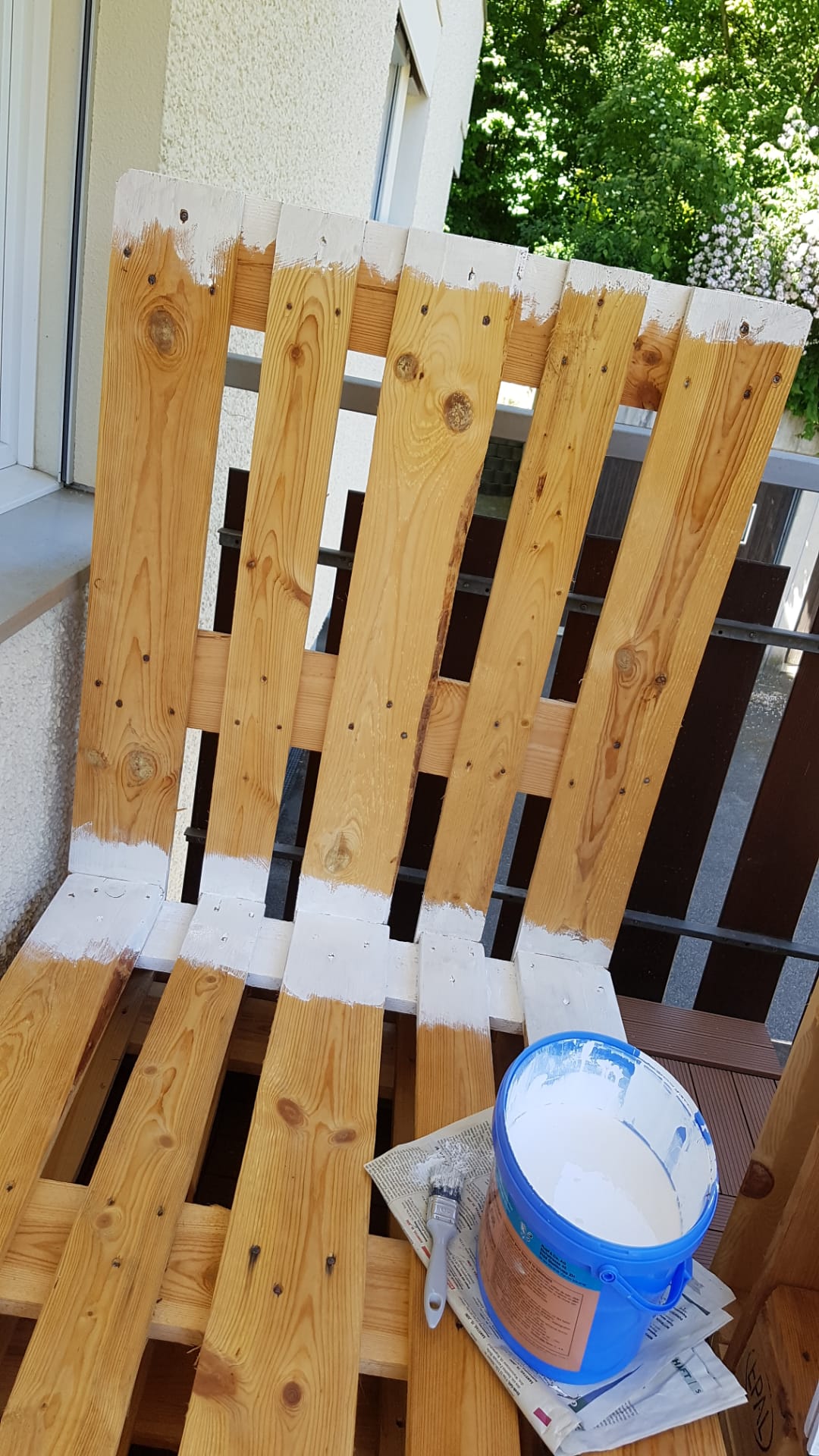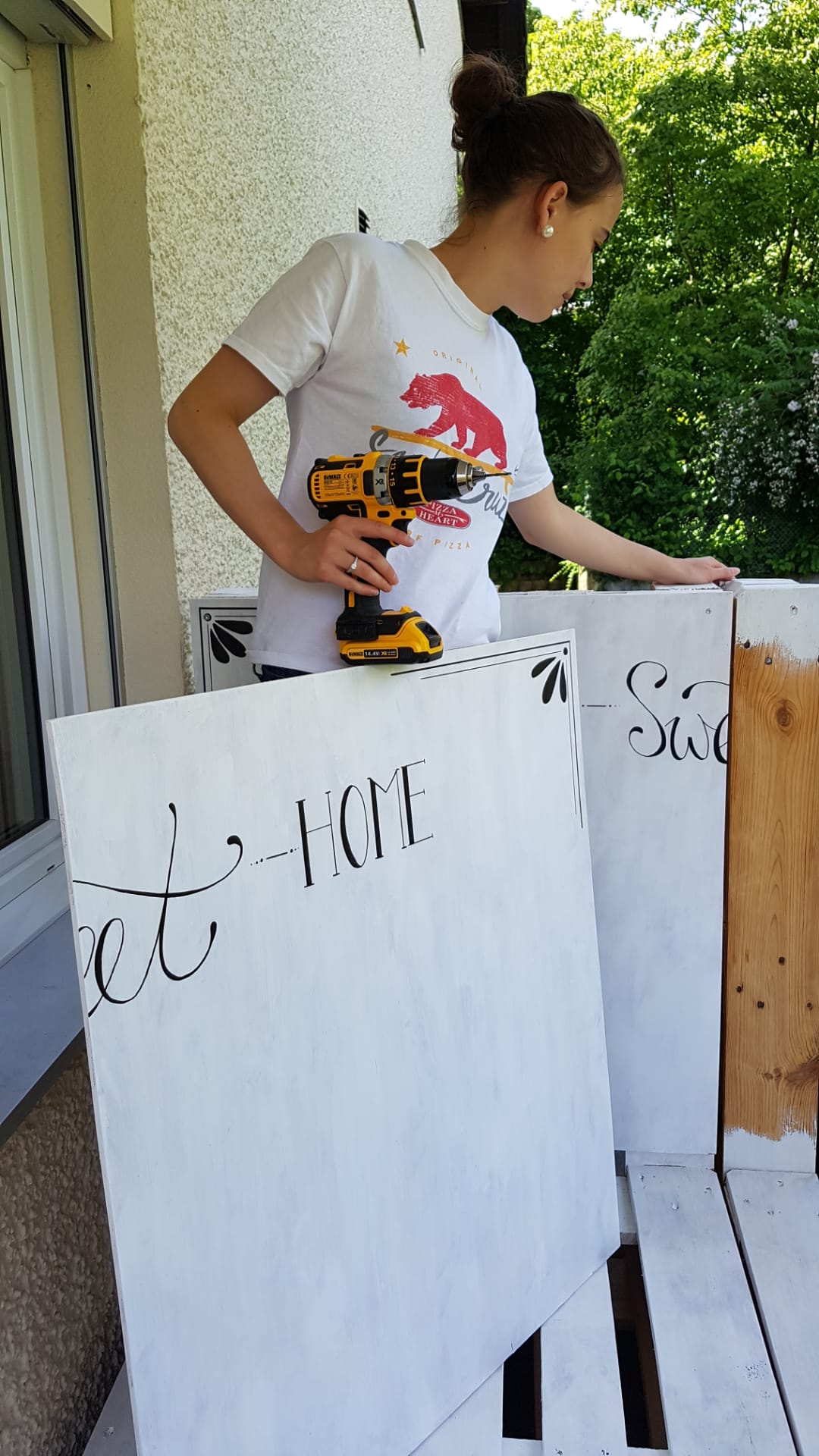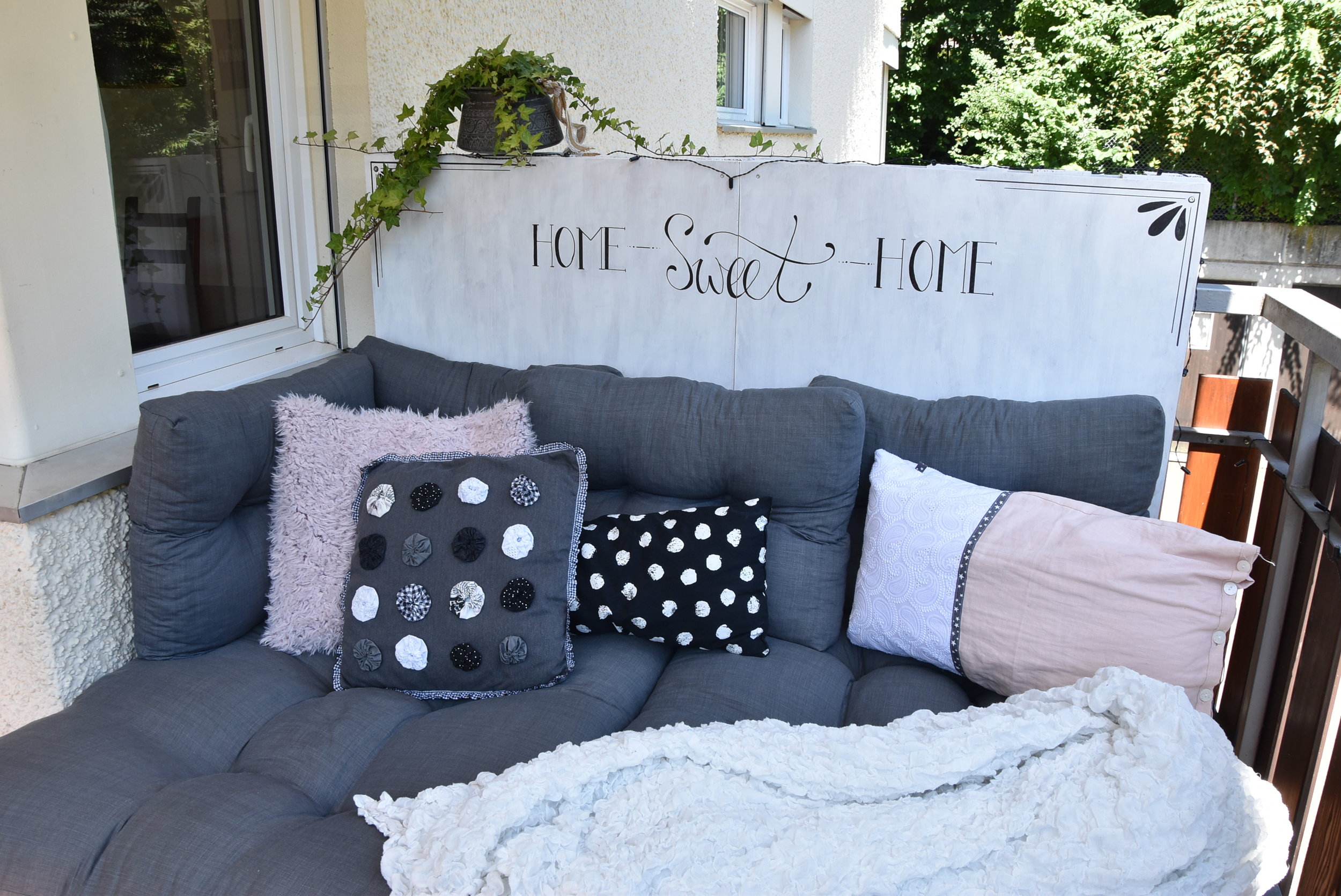Make Your Own Low Cost Outdoor Pallet Sofa
I am soooooooooo excited to share this project with you! It is possibly one of the biggest things I ever made and it took me several months to finish it. I made this palette couch for our balcony and I just have to say, we love it. It perfectly fits into the corner of our balcony and creates an oasis of rest. Since I decided to take the bottom palettes length wise, it is almost like an outdoor day bed for us. The first time we sat on it it actually rained a little bit and it was just the most perfect and peaceful shelter.
Another reason why I am so excited about it, is because I documented the entire process with photos, so you can do it as well! And don’t be scared because I said it took me several months. You can finish this in probably a week if you want to. And most of it is just waiting for the paint to dry. It took me so long because I had to wait for free weekends, nice weather (so the paint wouldn’t wash away while drying) and tools and machines. So here is the full process of building a palette couch:
What you need:
6 Paletts (they are around 10 Swiss Franks, probably cheaper in other countries)
Wooden board for the backwall, measure the length on the palettes
Sander (or sand paper)
Drill
20 long, big countersunk screws (about 5cm long)
8 short countersunk screws (about 2cm long)
2 L of wood impregnation oil
2.5kg of white, waterproof paint
wide brush and/or paint roller
newspaper to cover the ground
pencil and eraser
ruler
waterproof black pen
Choose four palettes that will be on top of our couch. Two for the bottom and two for the back. Sand them down with the sander until the surface feels smooth. This will be beneficial for two reasons: First it feels nicer to sit on it and you don’t have to be afraid to get a splinter, second it will suck up a whole lot less paint! Make sure you also “break” the edges (make them round) so you don’t hurt yourself on them later on.
Put two palettes on top of each other and screw them together. Take two of the long screws on each side (4 per two palettes). You will probably have to do this at an angle and it won’t look super pretty but it doesn’t matter in the end. Do the same with two more palettes.
Take one palette (which will be the backwall) and screw it onto the bottom part. Do the same with the second one. I didn’t attach the two couch parts so it would be easier to move around.
3. Cover the ground with newspaper and make sure to also cover under the palettes. The oil impregnation may be transparent but it does stain the floor permanently. Wipe the wood with a damp cloth to clean off all the dirt and dust and let it dry. You can only paint the wood if it is dry otherwise it can get moldy under the paint.
Then paint the palettes and the two wooden boards. It is up to you how much you cover with it. Make sure to cover the parts that could get wet though. If your couch will be inside you can skip this step.
4. As a next step you will paint the couch with the color you chose. I didn’t paint everything, simply the visible parts but of course you can do it all too. You will also have to paint the wooden board(s) for the back wall.
5. Take the wooden boards and sketch out the words with a pencil. If you are not familiar with lettering it might help to sketch it out on paper first. To start out with I put the pillows on the board, so I could see how high up the would reach. Then I put down the ruler, so I would be writing in a straight line. Start out with the middle word, so it will be aligned with the middle line. Erasing didn’t work that well for me, as it smeared the pencil around. It might be different for you though depending on the paint and eraser you use. You can also add all kinds of decorative elements to the board.
6. Trace the pencil lines with the black, waterproof marker. When you’re done and the marker is really! dry you can erase the pencil lines.
7. As a last step you screw the board(s) on the palettes. I did four of the short screws per palette, one in each corner. And voila: Here is your DIY palette couch!




















